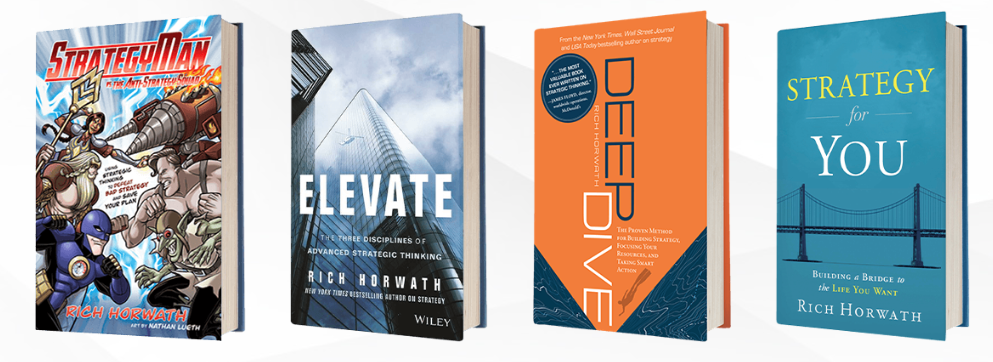“The last 10 years have seen a lot of innovation indexed largely toward content consumption. But the next 10 will be indexed toward content generation. It’ll be about what we can create.” Satya Nadella, CEO, Microsoft
Touch your middle finger to your thumb and then slide them back and forth. This gesture is accompanied by the phrase, “This is the world’s smallest violin and it’s playing just for you.” It’s typically directed at someone who is whining. These days, the violins are reaching a crescendo.

Newspapers, social media, and many work meetings have become the domain of whiners. Whine is defined as, “to complain in a peevish, self-pitying way.” It’s as if whining has become a profession, like accounting or engineering. Here’s an idea to share with the whiners in your world: stop complaining and start creating. All the time a person spends complaining that “this isn’t the way it should be,” or “this isn’t what I want,” could be energy channeled into creating value for others.
Why are some people sculptors (those who create) and some people sommeliers (in charge of the “whine”)? The answer lies in that dirty four-letter word: work. Whining is easy, takes no discipline, and doesn’t require any work. Creating value for others calls for discipline, effort, and persistence. Creating is harder than complaining, and significantly more important. As author Seth Godin writes, “It’s always the hard part that creates value.”
According to a survey of 540 managers published in the Harvard Business Review, just 39 percent said they could clearly see the value they create. It’s easy to get used to running on the activity treadmill where we’re rewarded for checking items off a to-do list rather than producing results. When you consider the activities, areas, and tasks you invest your time in each day, what percentage of that time is spent creating real value?
Creating value for others starts with our mindset. There are many different ways we can create value for others: giving them positive experiences, customized service, curated information, confidence, happiness, direction, memories, connections, fun, chills, excitement, direction, wins, etc. This ability to create value can permeate most of our days, and it can be as simple as the example that Glenn, the Hertz shuttle bus driver at the Cleveland airport, provides his riders: “Signs on the return are difficult to read so I strongly suggest you save this location to GPS. The airport is undergoing renovations, so arrive two hours early and get your gas refill 3-4 exits prior to the return.” Most shuttle bus drivers don’t share any of that specific information, but he did so in a simple, proactive way that provided value.
Let’s use the 3A Strategic Framework to show us a path to creating value:
1. Acumen (Thinking): the process of creating begins with an insight, which I define as a learning that leads to new value. An effective method of generating insights, or learnings that lead to new value, is through asking provocative questions. Let’s say the Vice President of Sales is riding with a sales representative on a customer visit. The VP can be asking questions prior to the call: e.g., What’s this customer’s primary value driver? In what areas have we not worked with this customer that we could explore? During the meeting: What are the main challenges you’re dealing with outside of our product area? In what areas have we never served you that we should consider creating new value? After the meeting: What problems, challenges or issues did the customer share that we can begin developing solutions to help them? What learnings can we take from that call to use in other situations? The key is to use thoughtful questions continually throughout your day to accelerate your accumulation of insights that stimulate value.
2. Allocation (Planning): once we’ve generated insights or learnings that lead to new value, we now want to consider how to configure our resources to deliver that value in an effective and efficient way. A proven method for accomplishing this is to develop a plan. I know what you’re thinking: I don’t have time to put together a 30-page plan. Nor should you. The essence of a plan answers two questions: What am I trying to achieve? How will I achieve it? This format can be used to help us use our resources to maximize value. A Chief Human Resources Officer may see a need to break down silos and improve collaboration to enhance the culture. One approach is to create a communications initiative and begin implementing it. Another approach is to begin with the two fundamental planning questions: What are we trying to achieve—what tangible results would indicate we’ve improved the culture? How will we achieve it—what behaviors will enable us to accomplish those results? The key is to use micro-plans to structure your approach to creating new value.
3. Action (Acting): with a plan in place, it’s time to act. A deep well of value creation comes from the act of combining ideas from areas outside of the one you’re currently in. A study of the consumer product design company IDEO showed that a number of their greatest value creations came from interchanging ideas from different industries (e.g., combining the nozzle of a shampoo bottle with a water carafe to create a new water bottle). An analysis of Thomas Edison’s vast array of inventions shows that the majority resulted from a combination of ideas from one area of science into another. Here is a mini-checklist to consider as you move into the action stage of creating value:
- Combinations: Have we combined ideas from different domains to spark new value?
- Communication: Have we clearly communicated the plan—what we are trying to achieve and how we will achieve it?
- Accountability: Have people been assigned specific responsibilities and given time frames for completion?
- Execution: Do people have the competencies and capabilities to execute the plan? Have we included milestones to gauge progress? Where are we recording our learnings and how are we sharing them with others?
The key is to prepare yourself and others with new combinations of ideas, concise communication, clear accountability, and execution actions that move the business forward.
It’s easy to fall into the trap of being a sommelier—someone focused on the “whine.” It’s more rewarding to take the approach of a sculptor—someone focused on creating products, services, experiences, or other beneficial interactions. Let’s put down the violins and pick up the paint brushes. As Spanish artist Pablo Picasso said, “The important thing is to create. Nothing else matters; creation is all.”
Help your team develop their strategic thinking and planning capabilities through executive leadership team workshops and individual strategic coaching. Explore the following strategy workshop topics and more than 200 resources to build your team’s strategic thinking and planning capabilities.
- Deep Dive: Developing Your Team’s Strategic Direction
- What is Strategy? Creating a Common Language and Understanding
- Sharpening Your Strategic Thinking & Planning Skills
- Elevate: Advanced Strategic Thinking and Planning for Executives
- Competitive Strategy to Win in Your Market
- Business Model Innovation
- Leading Strategy Conversations with Colleagues and Customers
- Innovative Thinking: Tools & Techniques for Creating New Value for Customers

